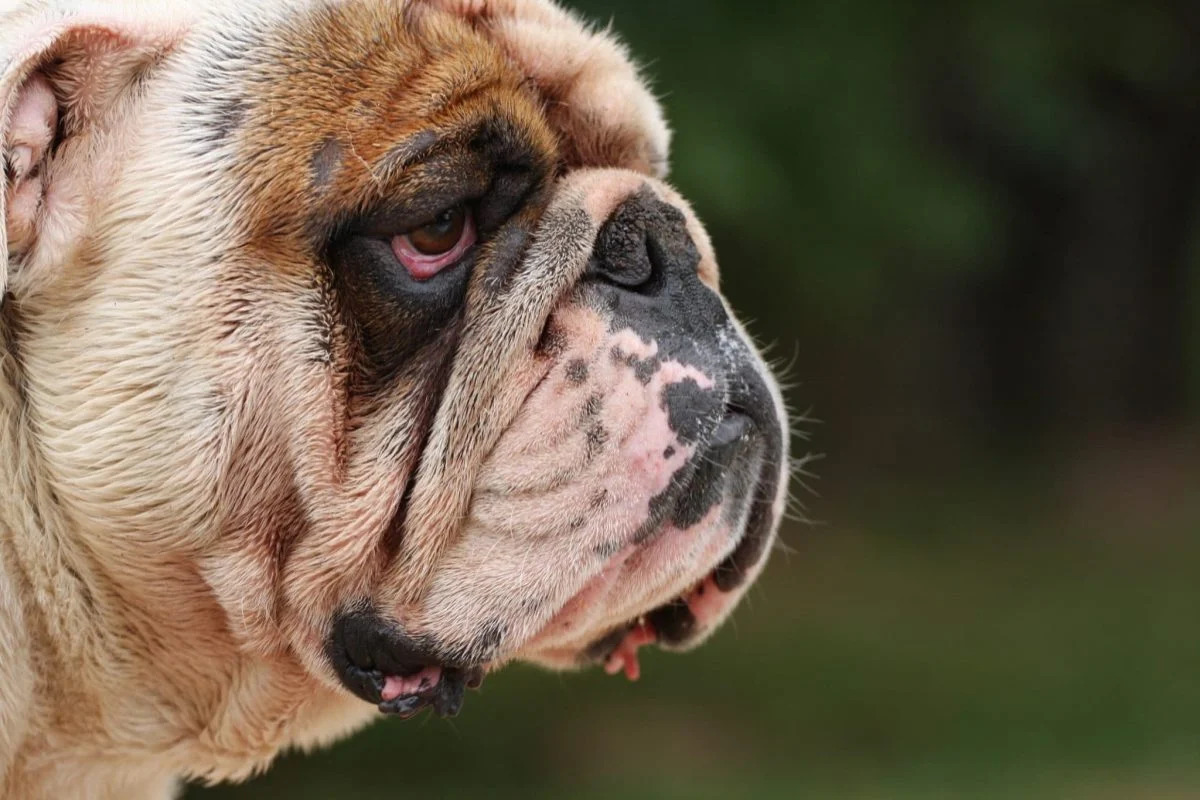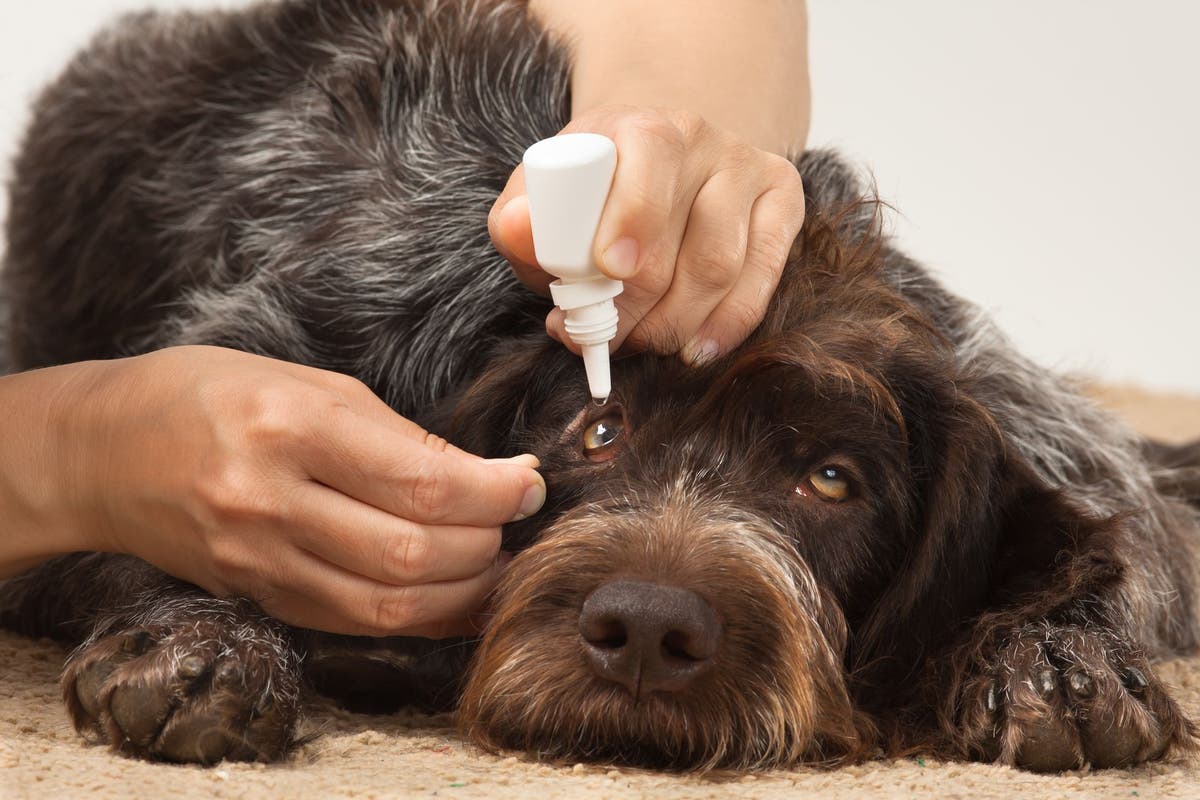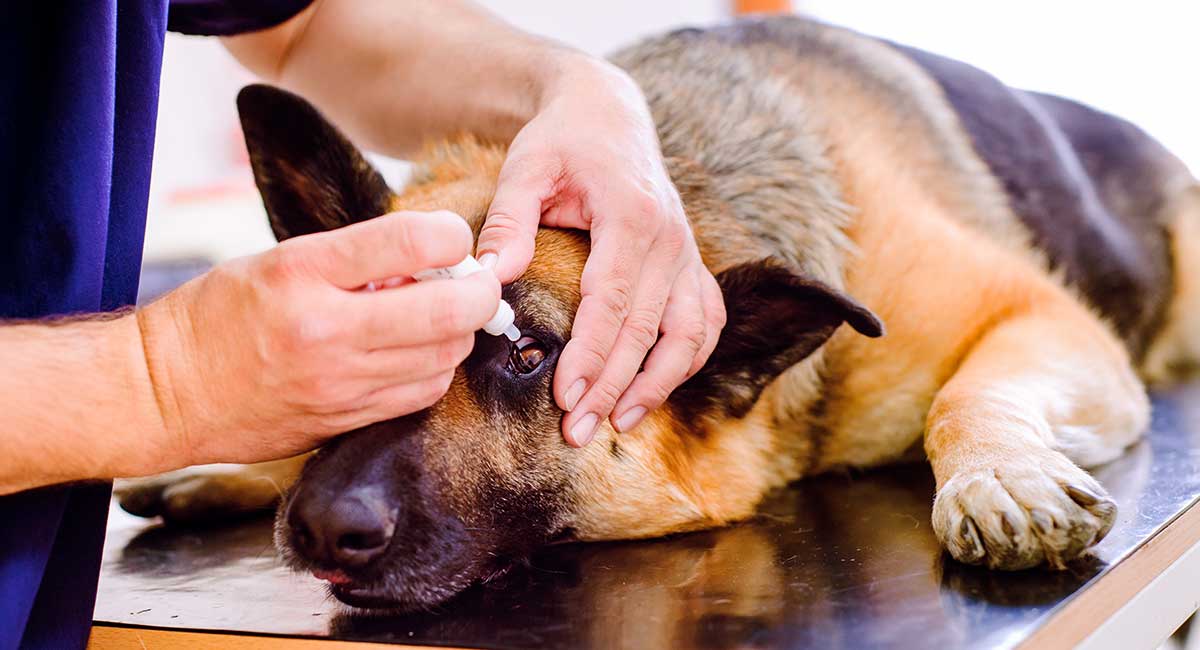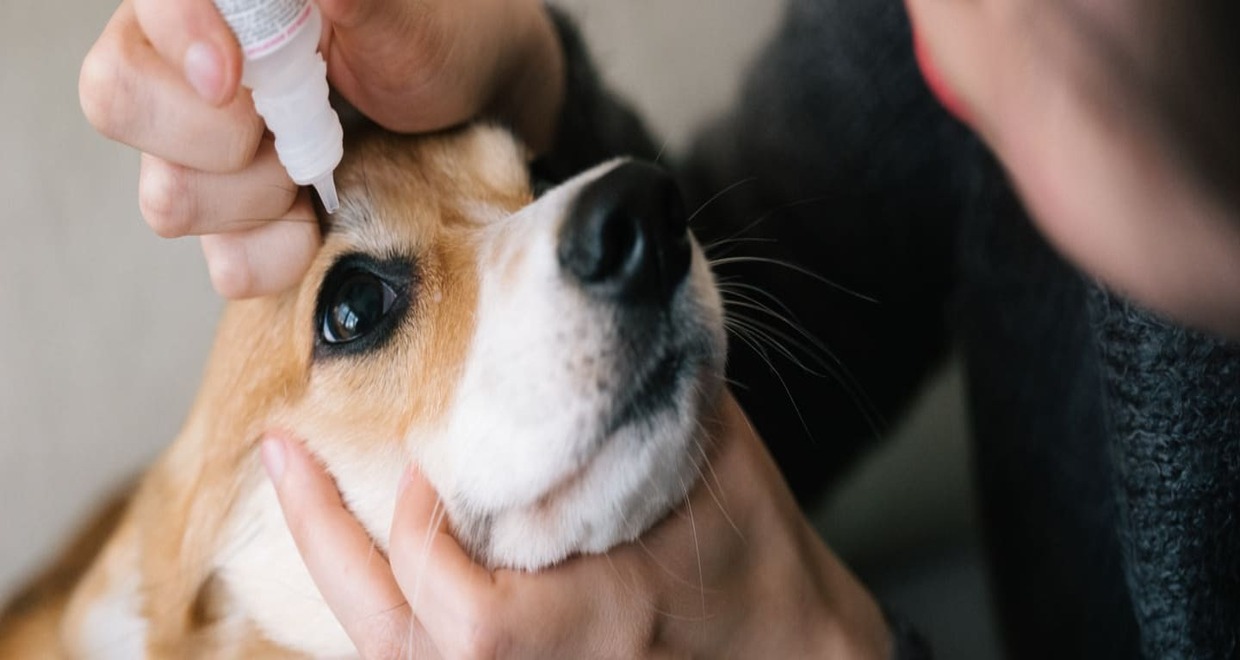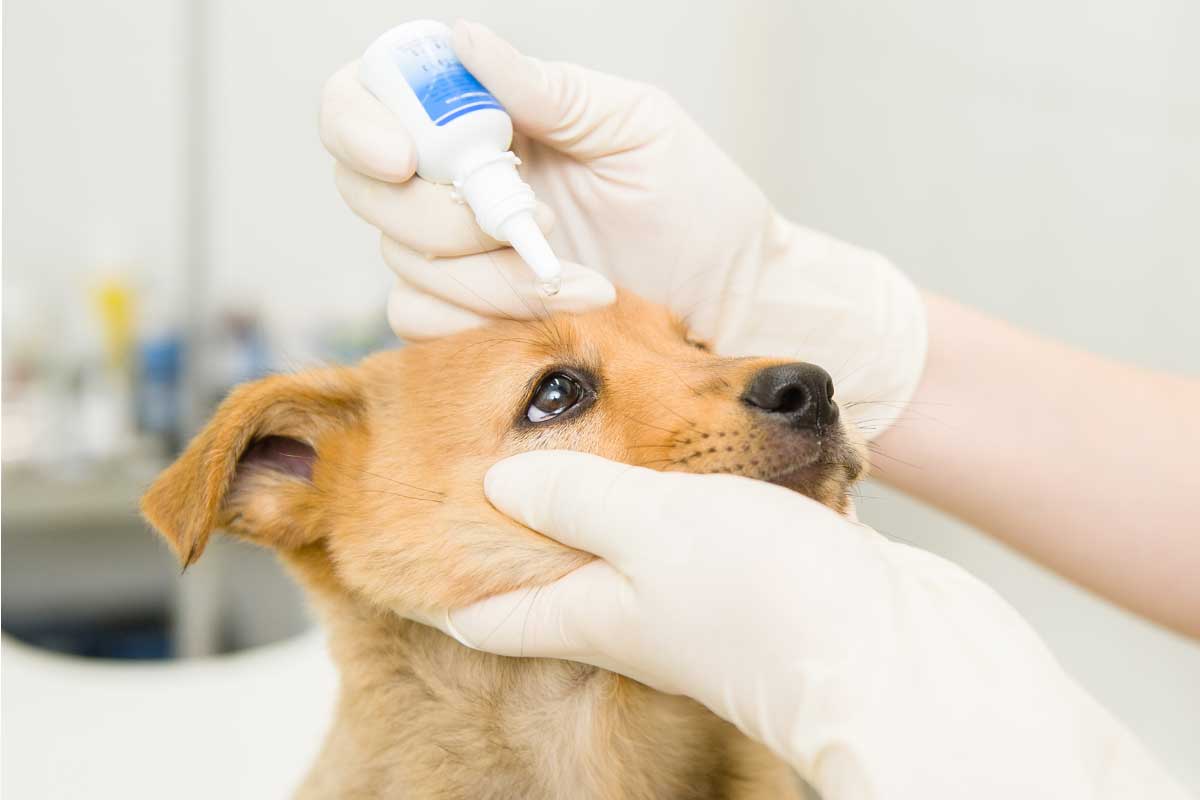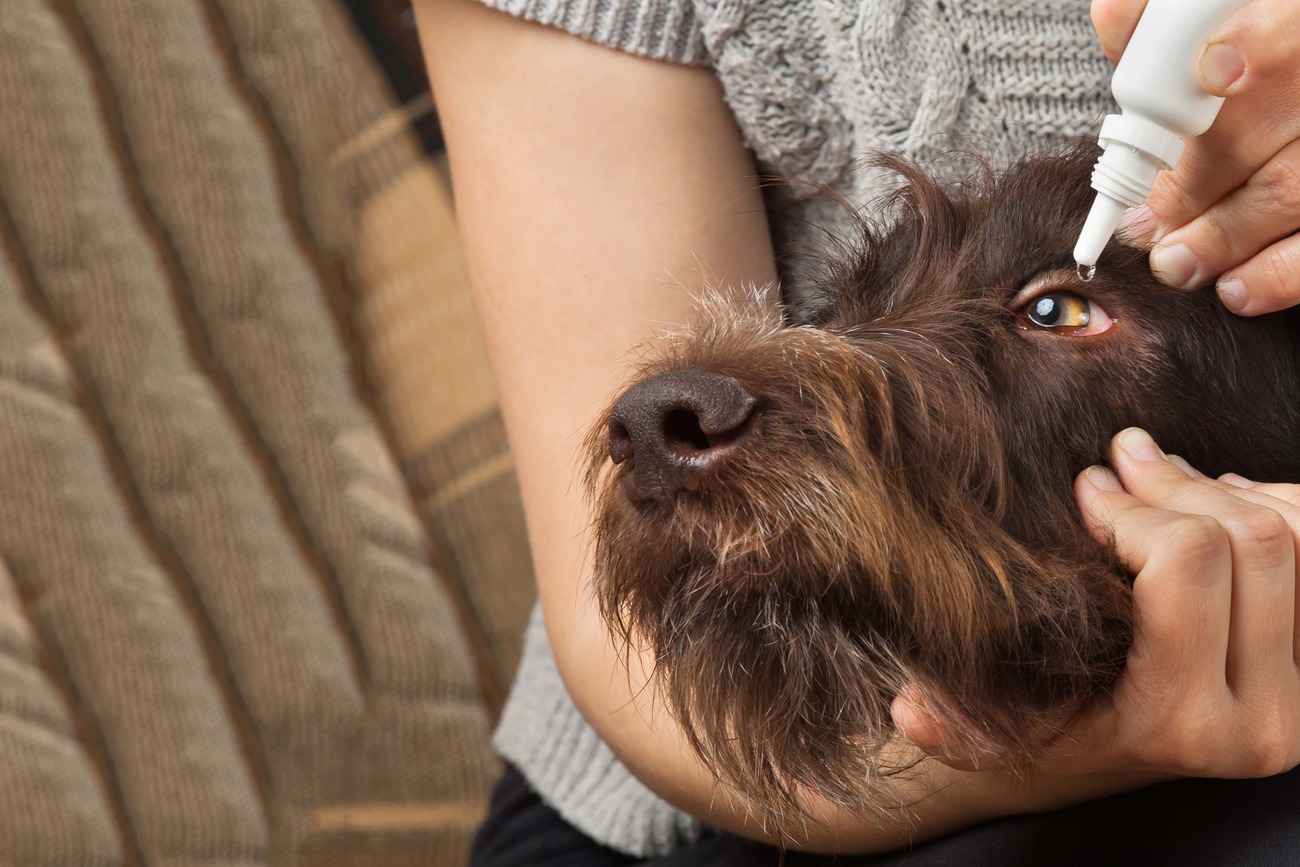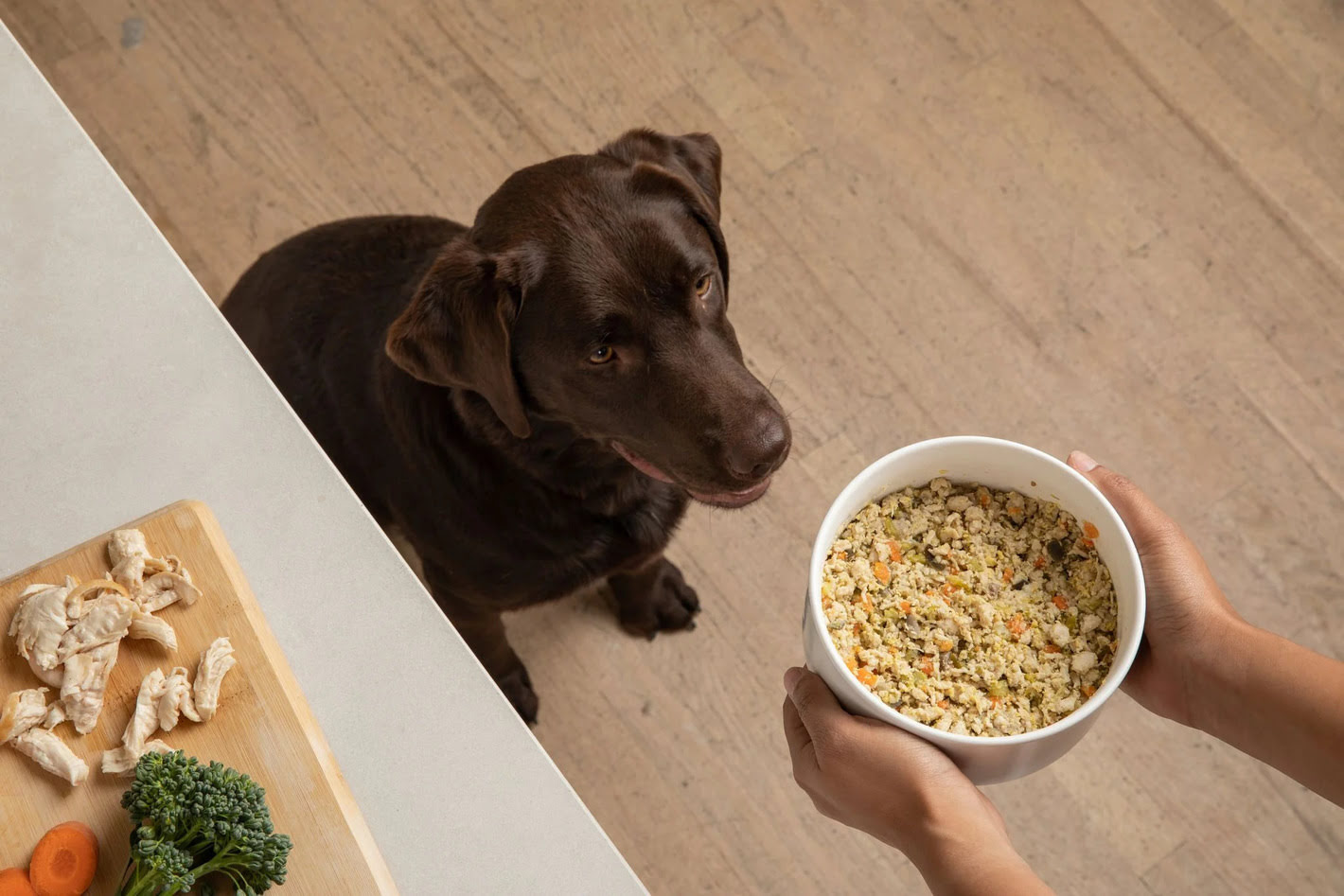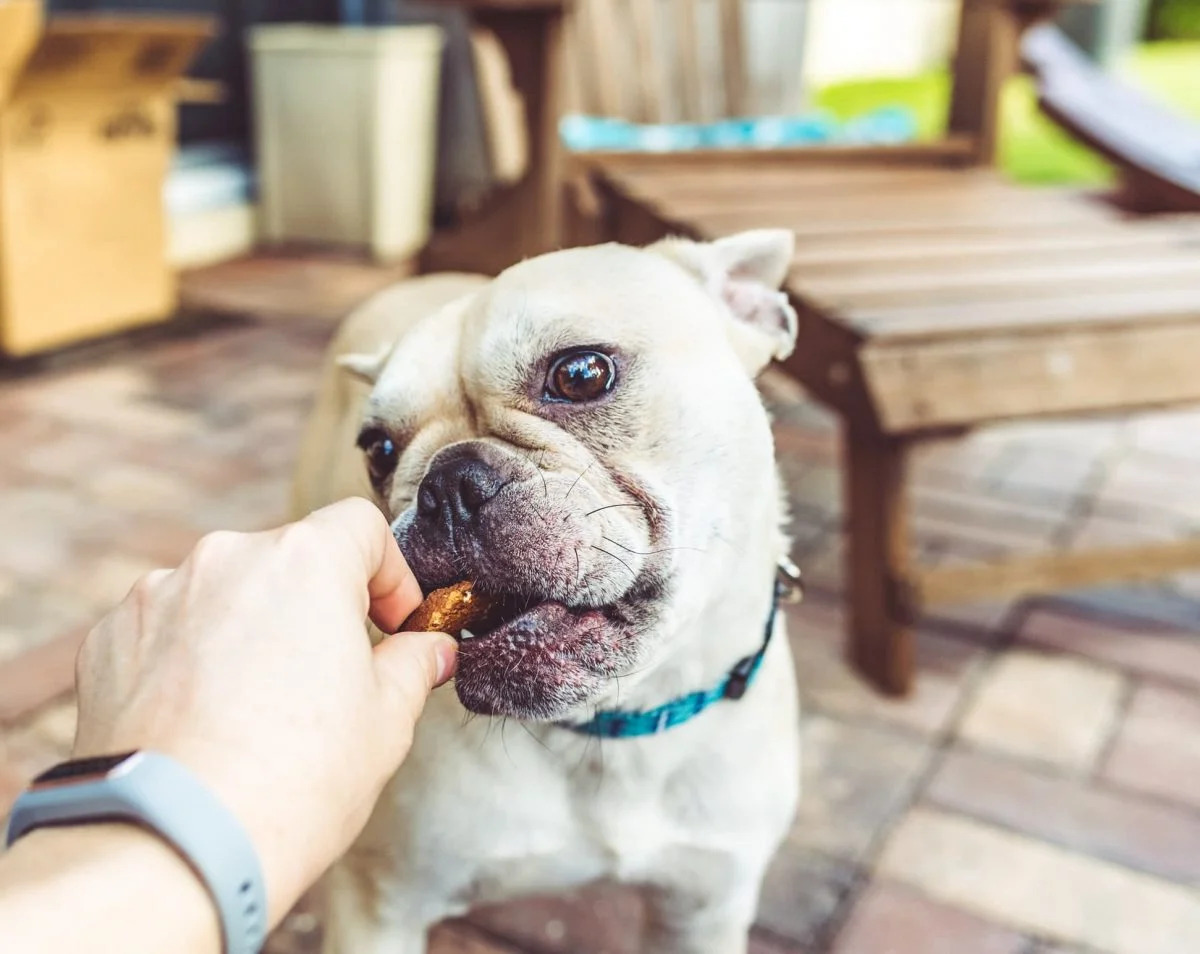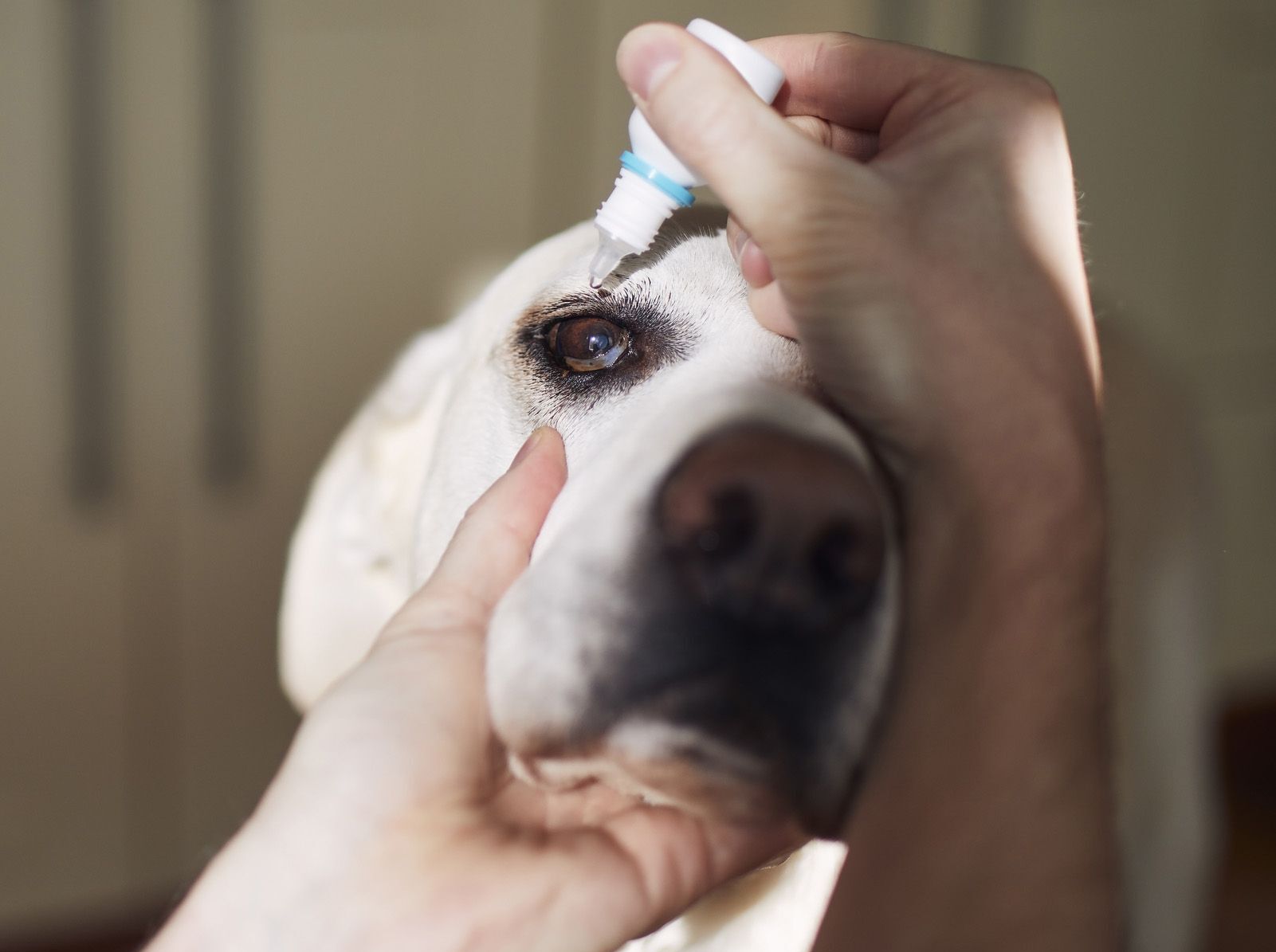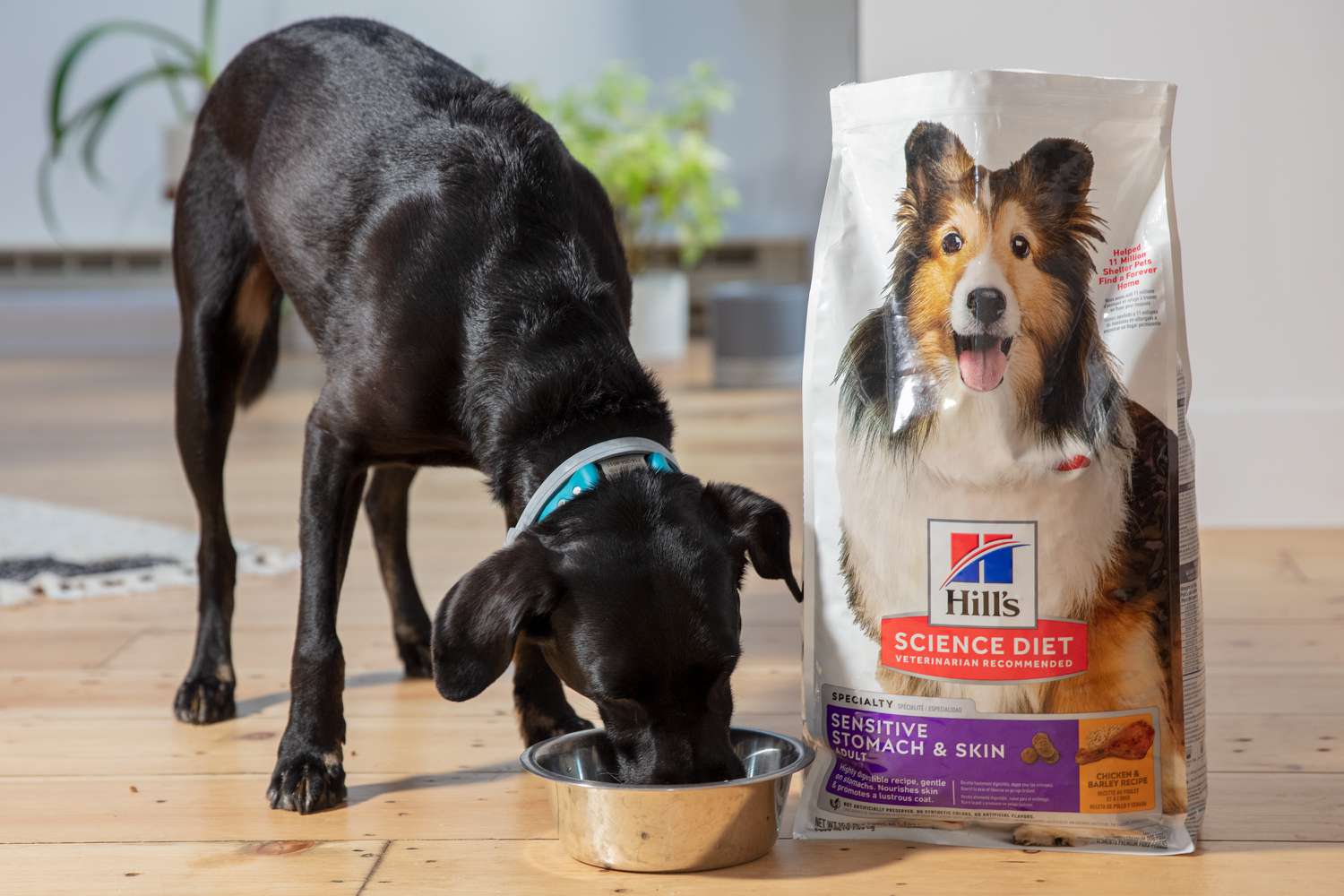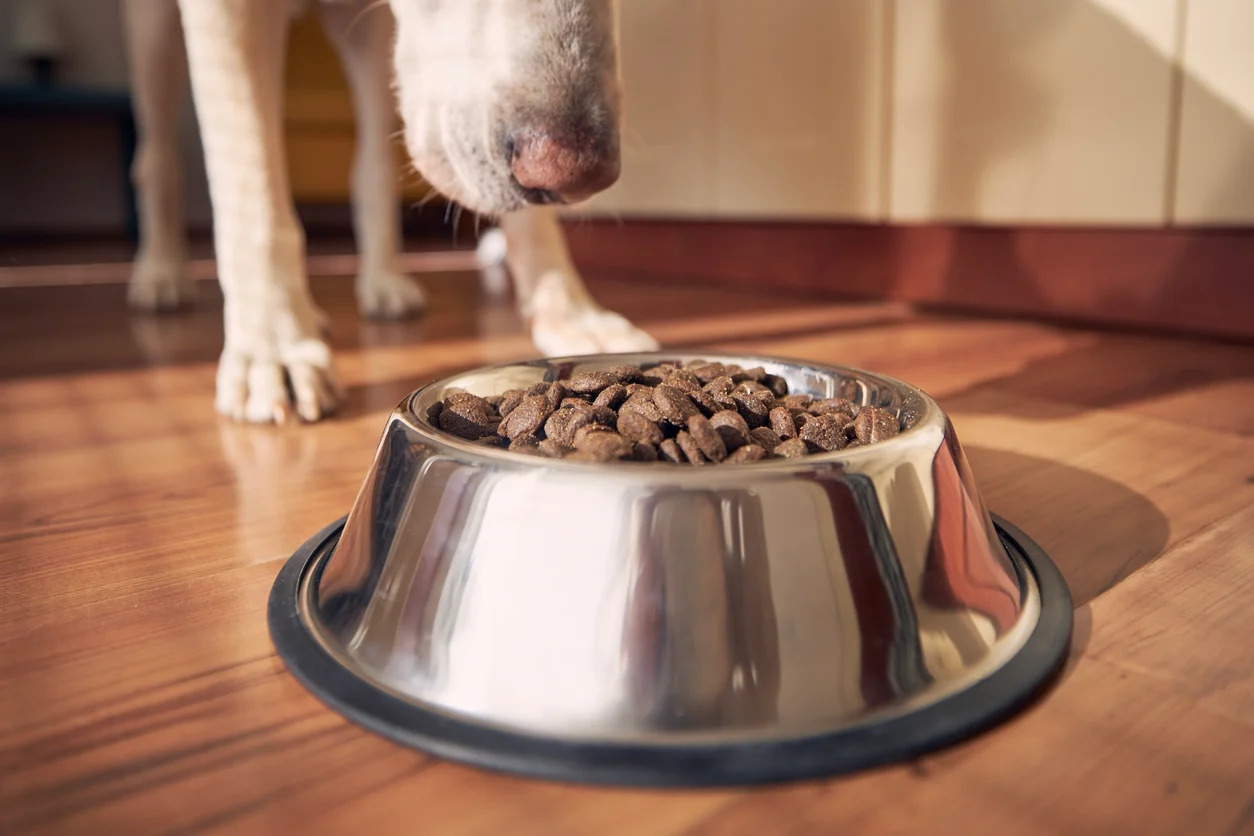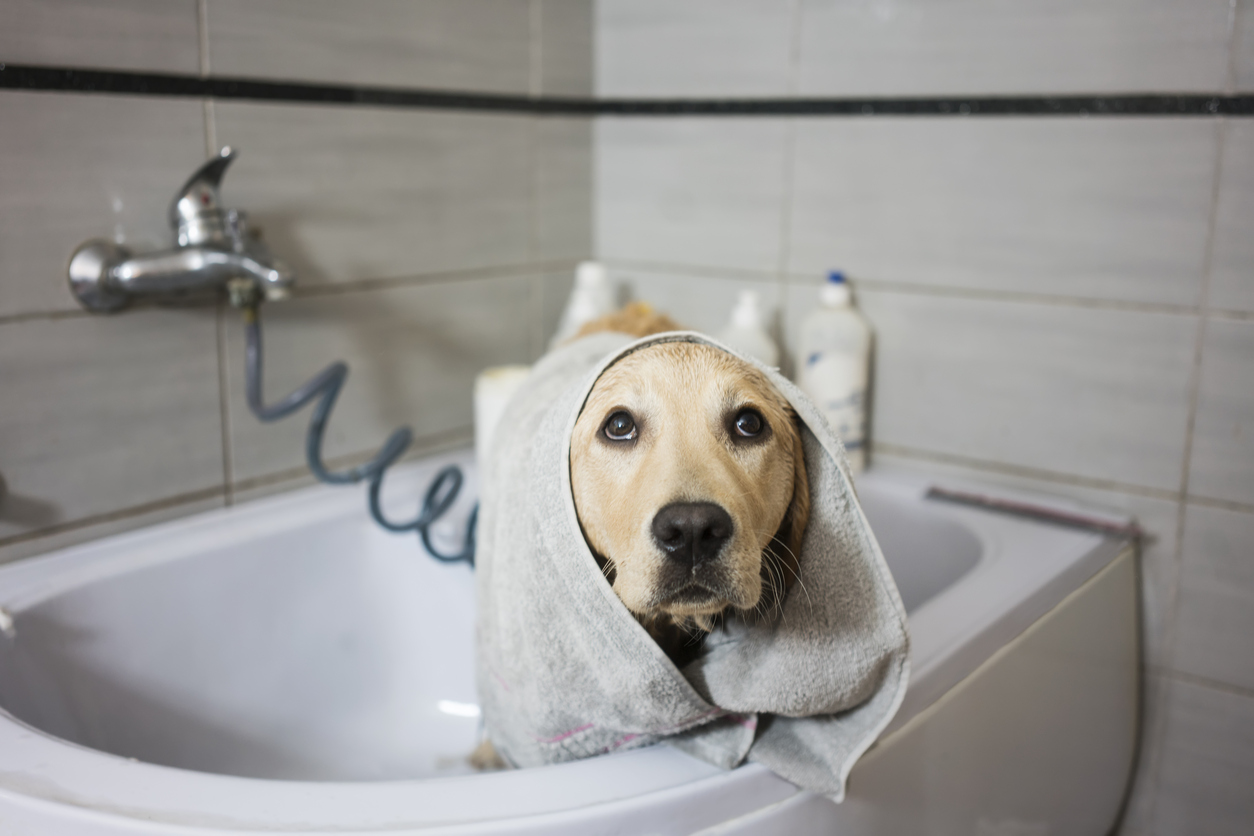Home>Health & Wellness>Common Health Issues>Eye and Ear Health>What Eye Drops Are Good For Glaucoma In Dogs
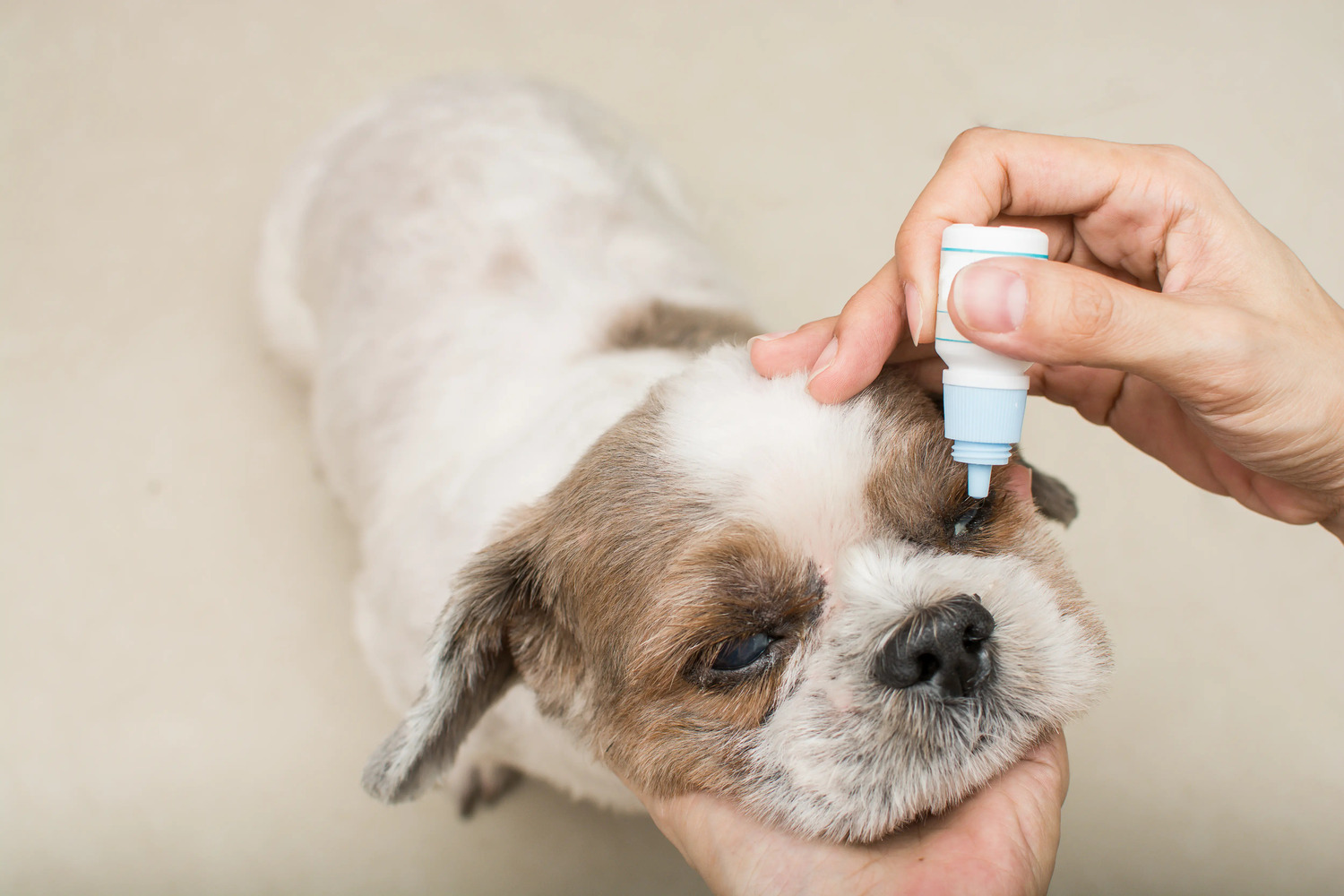

Eye and Ear Health
What Eye Drops Are Good For Glaucoma In Dogs
Published: February 12, 2024
Find the best eye drops for glaucoma in dogs to maintain their eye and ear health. Learn about effective treatments and care options for your pet.
(Many of the links in this article redirect to a specific reviewed product. Your purchase of these products through affiliate links helps to generate commission for Pawsomeoldies.com, at no extra cost. Learn more)
Table of Contents
Introduction
Glaucoma is a serious and potentially debilitating eye condition that can affect our beloved canine companions. Just as in humans, glaucoma in dogs can lead to pain, vision impairment, and even permanent blindness if left untreated. As responsible pet owners, it is crucial for us to be aware of the signs and symptoms of glaucoma and to understand the available treatment options.
One of the key components of managing glaucoma in dogs is the use of specialized eye drops. These eye drops play a vital role in alleviating the symptoms of glaucoma and preserving the overall ocular health of our furry friends. Understanding the importance of these eye drops and how to administer them correctly is essential for ensuring the well-being of our canine companions.
In this comprehensive guide, we will delve into the intricacies of glaucoma in dogs and the pivotal role that eye drops play in its treatment. We will explore the various types of eye drops available for managing glaucoma in dogs, shed light on the proper administration techniques, and highlight the potential side effects that pet owners should be mindful of. By the end of this article, you will have a deeper understanding of how eye drops can make a meaningful difference in the lives of dogs grappling with glaucoma.
Understanding Glaucoma in Dogs
Glaucoma, a condition characterized by increased pressure within the eye, can affect dogs just as it does humans. This elevated intraocular pressure can lead to damage of the optic nerve, resulting in pain, vision impairment, and potential blindness if left untreated. In dogs, glaucoma can be classified into two main types: primary and secondary.
Primary glaucoma is hereditary and is often seen in certain breeds, such as Cocker Spaniels, Basset Hounds, and Siberian Huskies. On the other hand, secondary glaucoma occurs as a result of other eye conditions, such as uveitis or lens luxation. Regardless of the type, both forms of glaucoma can have severe implications for a dog's ocular health.
The symptoms of glaucoma in dogs can be subtle and may include redness in the whites of the eyes, cloudiness within the cornea, excessive tearing, and visible discomfort. As the condition progresses, the affected eye may appear larger than the unaffected one due to the increased pressure. It's important for pet owners to be vigilant and seek prompt veterinary attention if any of these symptoms are observed.
Early diagnosis and intervention are crucial in managing glaucoma in dogs. A veterinarian will conduct a thorough eye examination, which may include measuring the intraocular pressure and assessing the overall health of the eye. Treatment strategies may involve a combination of oral medications, surgical procedures, and most notably, the use of specialized eye drops.
Understanding the nuances of glaucoma in dogs is pivotal for pet owners. By recognizing the signs, seeking timely veterinary care, and being proactive in the management of this condition, we can help ensure the well-being and comfort of our canine companions grappling with glaucoma.
Importance of Eye Drops in Glaucoma Treatment
The role of eye drops in the treatment of glaucoma in dogs cannot be overstated. These specialized medications are designed to alleviate the elevated intraocular pressure that characterizes glaucoma, thereby mitigating the associated discomfort and preserving the dog's vision. Unlike oral medications or surgical interventions, eye drops offer a targeted and non-invasive approach to managing this complex eye condition.
By instilling the prescribed eye drops into the affected eye, pet owners can directly address the root cause of glaucoma – the buildup of intraocular pressure. These medications work by either reducing the production of aqueous humor, the fluid within the eye, or by enhancing its drainage, thereby maintaining a healthy pressure level. This targeted approach not only helps in alleviating the symptoms of glaucoma but also plays a pivotal role in preventing further damage to the optic nerve.
Furthermore, the use of eye drops in glaucoma treatment offers a convenient and relatively stress-free option for both dogs and their owners. Unlike oral medications, which may be met with resistance or difficulty in administration, eye drops can be applied directly to the affected eye with relative ease. This can be particularly beneficial for dogs who may be averse to taking oral medications or for pet owners who seek a less invasive treatment approach for their furry companions.
In addition to their therapeutic benefits, the consistent and proper use of eye drops is essential for maintaining the overall ocular health of dogs with glaucoma. By adhering to the prescribed dosing schedule and administration technique, pet owners can help ensure that their canine companions receive the full therapeutic effects of the eye drops. This commitment to treatment adherence is instrumental in managing the progression of glaucoma and minimizing the risk of vision loss.
Ultimately, the importance of eye drops in the treatment of glaucoma in dogs lies in their ability to provide targeted, non-invasive, and effective management of this challenging eye condition. By understanding the significance of these specialized medications and their role in preserving the ocular health of our furry friends, pet owners can actively contribute to the well-being and comfort of dogs grappling with glaucoma.
Types of Eye Drops for Glaucoma in Dogs
When it comes to managing glaucoma in dogs, the availability of different types of eye drops offers veterinarians and pet owners a range of options to address the elevated intraocular pressure and associated symptoms. Each type of eye drop is formulated with specific active ingredients and mechanisms of action, tailored to the unique needs of dogs grappling with glaucoma. Understanding the distinct characteristics of these eye drops is essential for ensuring that the most suitable treatment approach is chosen for our canine companions.
-
Prostaglandin Analogs: These eye drops work by enhancing the drainage of aqueous humor from the eye, thereby reducing intraocular pressure. Prostaglandin analogs are often considered a first-line treatment for glaucoma in dogs due to their efficacy and relatively low risk of side effects. Commonly prescribed prostaglandin analogs for dogs include latanoprost and bimatoprost.
-
Beta-Blockers: Eye drops containing beta-blockers function by decreasing the production of aqueous humor within the eye, consequently lowering intraocular pressure. While beta-blockers are effective in managing glaucoma, they may be associated with potential side effects such as bradycardia (slow heart rate) and bronchoconstriction. Timolol is a commonly used beta-blocker in the treatment of glaucoma in dogs.
-
Carbonic Anhydrase Inhibitors: These eye drops work by reducing the production of aqueous humor, thereby aiding in the regulation of intraocular pressure. Carbonic anhydrase inhibitors are available in both topical and systemic formulations, offering flexibility in treatment options. Dorzolamide and brinzolamide are examples of carbonic anhydrase inhibitors used in the management of glaucoma in dogs.
-
Alpha-Agonists: Eye drops containing alpha-agonists work by decreasing the production of aqueous humor and enhancing its drainage, leading to a reduction in intraocular pressure. These medications are often used as adjunctive therapy in cases where other types of eye drops may not provide sufficient control of glaucoma. Commonly prescribed alpha-agonists for dogs include apraclonidine and brimonidine.
-
Combination Eye Drops: In some instances, veterinarians may prescribe combination eye drops that contain two or more active ingredients with complementary mechanisms of action. These combination eye drops offer the convenience of administering multiple medications in a single formulation, simplifying the treatment regimen for pet owners and potentially improving treatment adherence.
Understanding the distinct characteristics and mechanisms of action of these various types of eye drops is crucial for veterinarians and pet owners alike. By working closely with a veterinarian to determine the most suitable eye drop for a dog's specific condition, pet owners can play an active role in managing glaucoma and preserving the ocular health of their beloved canine companions.
How to Administer Eye Drops to Dogs
Administering eye drops to dogs requires patience, gentle handling, and a calm approach to ensure the process is as stress-free as possible for both the pet and the owner. Here are the steps to effectively administer eye drops to dogs:
-
Prepare the Environment: Find a quiet, well-lit area where you can comfortably and securely position your dog for the administration of the eye drops. It's essential to create a calm and relaxed atmosphere to minimize any anxiety or resistance from your furry companion.
-
Secure Restraint, if Necessary: Depending on your dog's temperament and comfort level, you may need to gently restrain them to prevent sudden movements during the administration of the eye drops. This can be achieved by having another person gently hold your dog or by using a gentle, yet secure, restraint technique.
-
Positioning the Dog: Carefully position your dog so that they are comfortable and secure. If possible, have them sit or lie down in a relaxed position, allowing easy access to their affected eye.
-
Prepare the Eye Drops: Prior to administering the eye drops, ensure that the medication is at room temperature, as cold eye drops may cause discomfort to your dog. Shake the eye drop bottle gently to ensure the contents are well-mixed.
-
Approach with Calmness: Approach your dog with a soothing and reassuring demeanor. Speak to them in a gentle tone to help keep them at ease throughout the process.
-
Administering the Eye Drops: With one hand, gently hold your dog's head to prevent sudden movements. Using your other hand, carefully pull down the lower eyelid to create a small pocket for the eye drops. Hold the eye drop bottle close to the eye but avoid direct contact. Instill the prescribed number of drops into the lower conjunctival sac, ensuring that the drops make contact with the eye surface.
-
Blinking and Wiping: After instilling the eye drops, release your dog's head and allow them to blink naturally. If excess medication spills onto the fur around the eye, gently wipe it away with a clean, dry tissue to prevent any potential irritation.
-
Positive Reinforcement: Immediately after administering the eye drops, offer your dog verbal praise, gentle petting, or a small treat as a form of positive reinforcement. This helps create a positive association with the eye drop administration process.
By following these steps and maintaining a patient and gentle approach, pet owners can effectively administer eye drops to their dogs, contributing to the successful management of glaucoma and the overall well-being of their beloved pets.
Potential Side Effects of Eye Drops for Glaucoma in Dogs
While eye drops play a crucial role in managing glaucoma in dogs, it's important for pet owners to be aware of the potential side effects associated with these medications. Understanding and recognizing these side effects can help pet owners promptly address any adverse reactions and ensure the well-being of their canine companions undergoing glaucoma treatment.
-
Ocular Irritation: One of the most common side effects of eye drops for glaucoma in dogs is ocular irritation. This may manifest as redness, itching, or discomfort in the treated eye. It's essential for pet owners to observe their dog's behavior after administering the eye drops and to seek veterinary advice if persistent ocular irritation is noted.
-
Allergic Reactions: Some dogs may exhibit allergic reactions to certain components of the eye drops, leading to symptoms such as swelling of the eyelids, excessive tearing, or even more severe systemic reactions. If any signs of an allergic response are observed, immediate veterinary attention is warranted to address the situation effectively.
-
Systemic Absorption: In some cases, the active ingredients in the eye drops may be systemically absorbed, potentially leading to side effects such as changes in heart rate, respiratory issues, or gastrointestinal disturbances. Pet owners should be vigilant for any unusual behaviors or symptoms that may indicate systemic absorption of the eye drop medication.
-
Corneal Damage: Prolonged use of certain types of eye drops, particularly those containing preservatives, may contribute to corneal damage in some dogs. This can manifest as corneal thinning, ulceration, or cloudiness. Regular veterinary monitoring and assessment of the ocular health of dogs receiving long-term glaucoma treatment is essential to detect and address any potential corneal complications.
-
Increased Ocular Discharge: Some dogs may experience an increase in ocular discharge following the administration of eye drops. While mild discharge may be a normal response to the medication, excessive or purulent discharge warrants veterinary evaluation to rule out any underlying complications such as infection or inflammation.
-
Changes in Intraocular Pressure: Paradoxically, certain eye drops used in the management of glaucoma may lead to fluctuations in intraocular pressure, potentially exacerbating the condition. Regular monitoring of intraocular pressure by a veterinarian is crucial to ensure that the prescribed eye drops are effectively controlling the pressure within the eye.
-
Behavioral Changes: In rare instances, dogs may exhibit behavioral changes following the administration of eye drops, such as increased restlessness, agitation, or reluctance to open the treated eye. While behavioral changes may be indicative of discomfort or adverse reactions, they should be promptly communicated to a veterinarian for further evaluation.
It's important to note that not all dogs will experience these side effects, and many can tolerate the prescribed eye drops without any adverse reactions. However, pet owners should remain vigilant and proactive in monitoring their dog's response to the medication, promptly reporting any concerns to their veterinarian, and seeking guidance on managing potential side effects.
By being informed about the potential side effects of eye drops for glaucoma in dogs, pet owners can play an active role in safeguarding the ocular health and overall well-being of their beloved canine companions undergoing glaucoma treatment.
Conclusion
In conclusion, the management of glaucoma in dogs necessitates a comprehensive approach that encompasses early detection, timely intervention, and diligent treatment adherence. The pivotal role of specialized eye drops in alleviating the symptoms of glaucoma and preserving the ocular health of our canine companions cannot be overstated. By understanding the nuances of this complex eye condition and the significance of eye drops in its treatment, pet owners can actively contribute to the well-being and comfort of their furry friends grappling with glaucoma.
The diverse types of eye drops available for managing glaucoma in dogs offer veterinarians and pet owners a range of options to address the elevated intraocular pressure and associated symptoms. From prostaglandin analogs to beta-blockers and carbonic anhydrase inhibitors, each type of eye drop is tailored to the unique needs of dogs with glaucoma, providing targeted and effective management of this challenging condition.
Furthermore, the proper administration of eye drops to dogs is a crucial aspect of their treatment regimen. By approaching the process with patience, gentleness, and a calm demeanor, pet owners can ensure that their dogs receive the full therapeutic benefits of the eye drops, contributing to the successful management of glaucoma and the preservation of their ocular health.
It is essential for pet owners to be mindful of the potential side effects associated with eye drops for glaucoma in dogs. By recognizing and promptly addressing any adverse reactions, pet owners can safeguard the well-being of their canine companions undergoing glaucoma treatment, ensuring a positive and comfortable experience for their beloved pets.
Ultimately, the successful management of glaucoma in dogs hinges on a collaborative effort between pet owners and veterinary professionals. By staying informed, proactive, and dedicated to the well-being of their furry companions, pet owners can make a meaningful difference in the lives of dogs grappling with glaucoma, offering them the care, comfort, and support they deserve.

